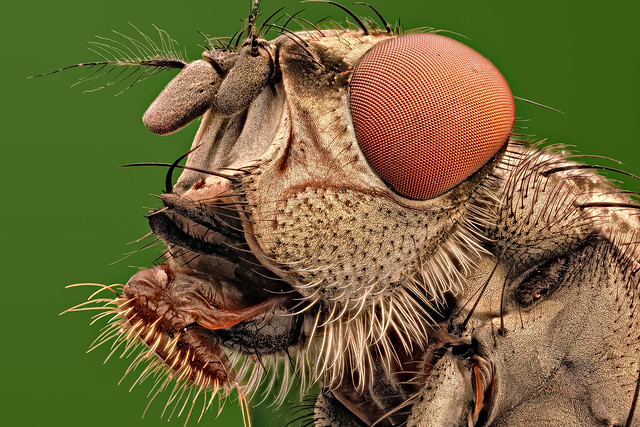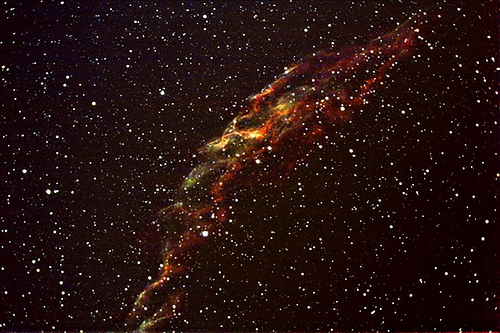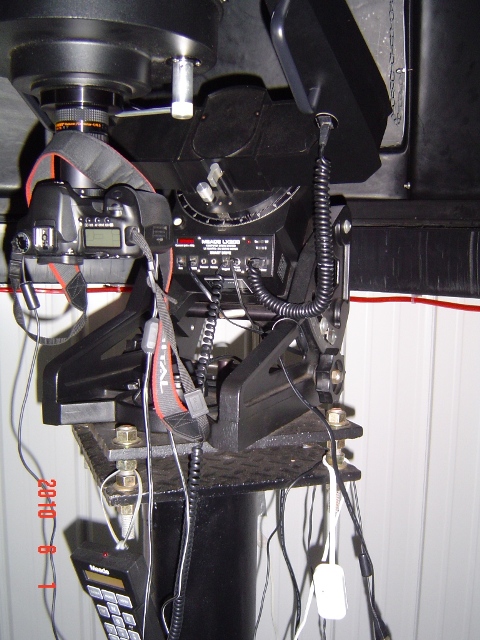
Posted on 06/29/2019 7:53:16 AM PDT by ProtectOurFreedom
Russian photographer Alexander Stepanenko visited the Murmansk region in Russia for years, attempting to capture an image of the aurora over an abandoned military hydroelectric station. Stepanenko's patience finally paid off on Sept. 10, 2018.
This and other photos were recently selected for the shortlist of the Astronomy Photographer of the Year contest, organized by the Royal Observatory, Greenwich in the United Kingdom.
(Excerpt) Read more at livescience.com ...
For this image of the Devil's Head Nebulae Complex, Hungarian photographer László Bagi used custom-built Newtonian reflecting telescope with an exposure of 29 hours, highlighting the nebula's structure and depth. Bagi captured the photo in Szarvas, Hungary on Oct. 10, 2018.
The Gum Nebula, or Gum 12, is an emission nebula that extends 36 degrees across the night sky and is actually the very large remnant of the 12,000-year-old Vela supernova. The nebula mostly consists of hydrogen (red) and doubly ionized oxygen (blue). Australian photographer Eddie Trimarchi captured this bi-color image at Biggera Waters, Australia, on Feb. 25, 2018.
[POF aside -- Wow, 36 degrees! That is HUGE]
Photographer Raul Villaverde Fraile of Spain captured one of the most photographed astronomical objects — the Orion Nebula — in an exposure lasting 33 hours and 45 minutes. The image was taken on Jan. 6, 2019, at Ocentejo, Castile-La Mancha, Spain. 
Ok, I’m curious. How does one do a 33 hour exposure? The shutter must be closed during daylight hours, right? Would this not be a multiple exposure?
bttt
They use what's called "Stacking software." Stacking minimizes the ISO noise that accumulates in one long exposure. You effectively take a lot of long exposure shots (probably several hours) and the software "stacks" the many exposures into one. It automatically matches control points in the photo to align the many photos into one and does all the calculations needed to get the merged photo right. It is really amazing software.
It's widely used for nature photography. The slick thing is you can create a huge false but very real appearing depth of field. For small subjects like insects, you set your focus point for the initial shot, change the focus point (a few thousandths of an inch), take a shot, etc. Software controls everything - changing the focus point and taking the shots. You can stack thousands of images this way to get photos that are impossible due to optical physics limitations. Here's an example:

One popular tool is "Zerene Stacker." Here is a Gallery of Images taken with Zerene Stacker.
For small subjects like insects, you set your initial focus point, take a shot, change the focus point (a few thousandths of an inch), take a shot, etc.
Frame stacking. It is not a multiple exposure in the strictest sense. A multiple exposure is when you open and close the shutter multiple times without advancing the image frame.
Re frame stacking. Very interesting. Thanks!
It's a process I use which requires the camera be attached to a telescope all riding on an equatorial mount which precisely tracks objects as they appear to move across the sky. It's basically compensating for the movement of the earth as it turns underneath the celestial sphere.
For example if I want to take a 3 hour exposure of a deep space object, I would set the camera to take 1 minute exposures, 180 times which equals 3 hours.
It's done this way to avoid attempting to track object for 3 hours straight with shutter open. No way could my equipment do that as it's simply not precise enough to perfectly track that long. If I tried that it would result in images with stars and objects blurring and having big trails on them not to mention causing other issues like heating up the camera electronics etc.
I then take those 180 shots or exposures and process them using software that can combine all 180 frames into one single image. To obtain really nice quality images, this is not an easy or a simple quick process.
Here's my amateur shot below I took of the Veil Nebula which is an old supernova remnant and the remains of cataclysmic explosion of star that exploded about 7,000 years ago. This nebula is about 1,860 light-years distance from us. This was 16x150 or 16 separate pics at 150 second exposures each, then combined into one.

Lovely.
Depending on the time of year in the Arctic, it’s not a problem, when the sun does not rise above the horizon. Similarly, taking a 33 hour exposure of deep space is also never a problem. . . If you have a stable platform from which to take it.
MUCH better than that other junk. You did a great job!
I don’t do astrophotography myself, but, I do appreciate the efforts of those who do.
I prefer that the light from that galaxy 50 million light years away that goes into my scope actually hit my eye, not, not a CCD camera. Makes it a little more special to me.
Wow!
Amazing!
For those of us that are sight challenged

I understand, but when I'm AP imaging, I'm watching/monitoring my targets on computer screens inside the observatory or remotely. I see what the telescope/camera is seeing real time, prior to taking the exposures. Live view is simply shown on the monitor and I get a much bigger field of view with the monitors than through an eyepiece.
In addition, as you no doubt are aware, our eyes are no where near as sensitive as what the camera is capable of seeing. Thanks to the camera, it brings out the data and detail far beyond what human eyes can ever see.
However, I agree with you when if comes to close objects that don't require long exposures, such as direct lunar viewing through the eyepiece. It's like being in a spacecraft looking out the windows while cruising over mountains and craters.☺
*ping*
“In addition, as you no doubt are aware, our eyes are no where near as sensitive as what the camera is capable of seeing.”
That’s why aperture is everything. I have a 12.5 dob, and I can see some really faint stuff 12th to 14th mag., but, I have a buddy that has a 22in Obsession. You can see dimmer, and, much more detail in his scope.
We observe in Coastal Georgia, and, last fall a group from my club was invited to go do some observing with Al Nagler while he was visiting nearby. We ended up out on a pier in a river and only had room for the 22 dob. Al pulled out a night vision monocular (white light) that he had been helping develop. It had attachments so you could hook it up to a scope using his lenses, and, so we did along with an OIII filter. We took a look at M8 and had a great deal of time finding the edges of the nebula. Each of us took a turn looking and we would just move the scope around until we found what we thought was the edge. The Veil was spectacular, and, if you just looked through the monocular, you got a 1x view of the Milky Way that was wonderful.
Then we put the OIII filter on at 1x. ALL those gas clouds that are in the Milky Way in Cygnus and Cepheus popped out like an ice crystal. They looked like clouds, but, didn’t move.
It was a fun evening!
If you look close at the bottom 1/2" steel plate used for leveling, you'll note the diamond plate pattern. It's the same stuff used on commercial truck beds etc.

Thanks fieldmarshaldj.
Disclaimer: Opinions posted on Free Republic are those of the individual posters and do not necessarily represent the opinion of Free Republic or its management. All materials posted herein are protected by copyright law and the exemption for fair use of copyrighted works.